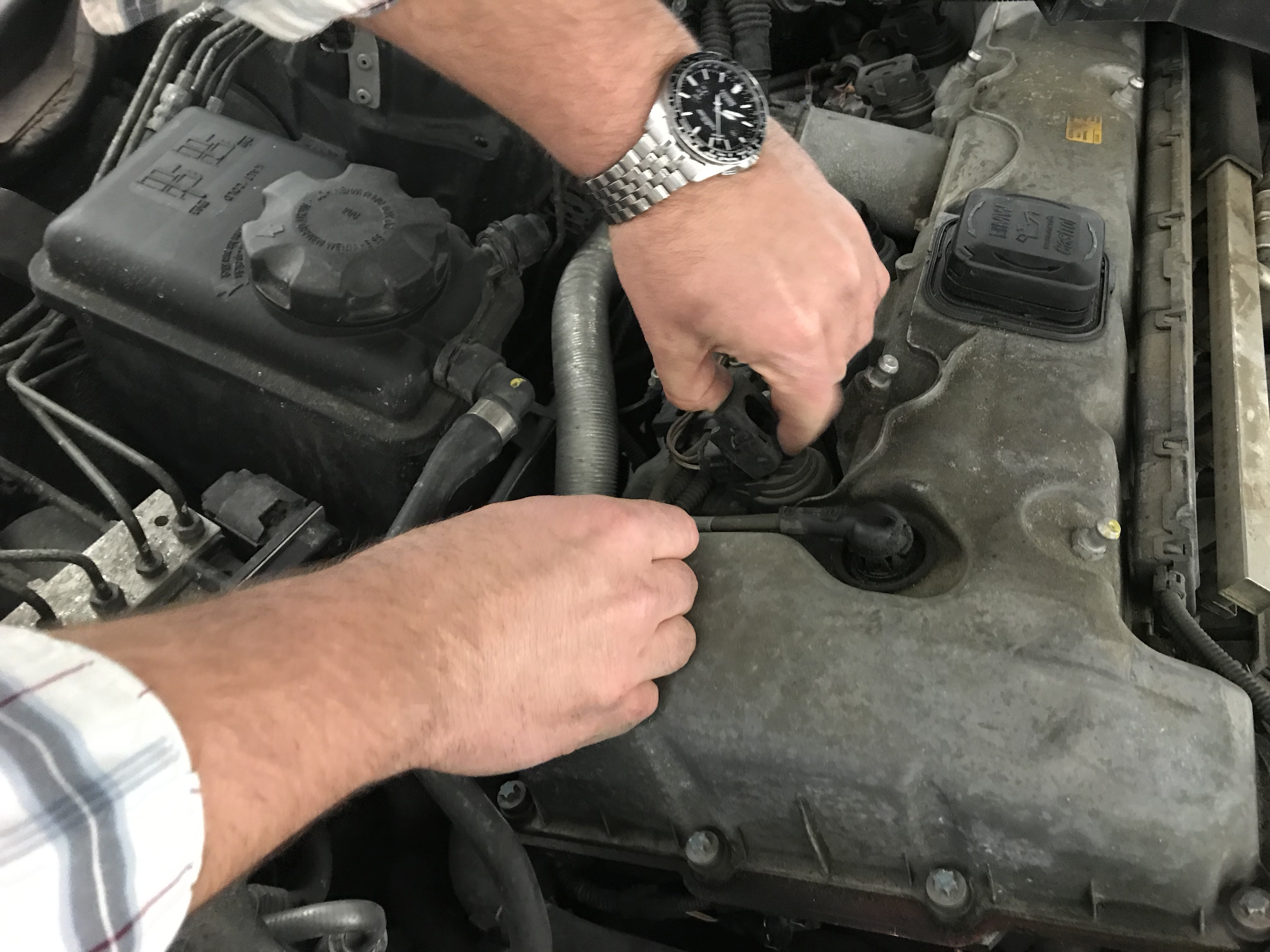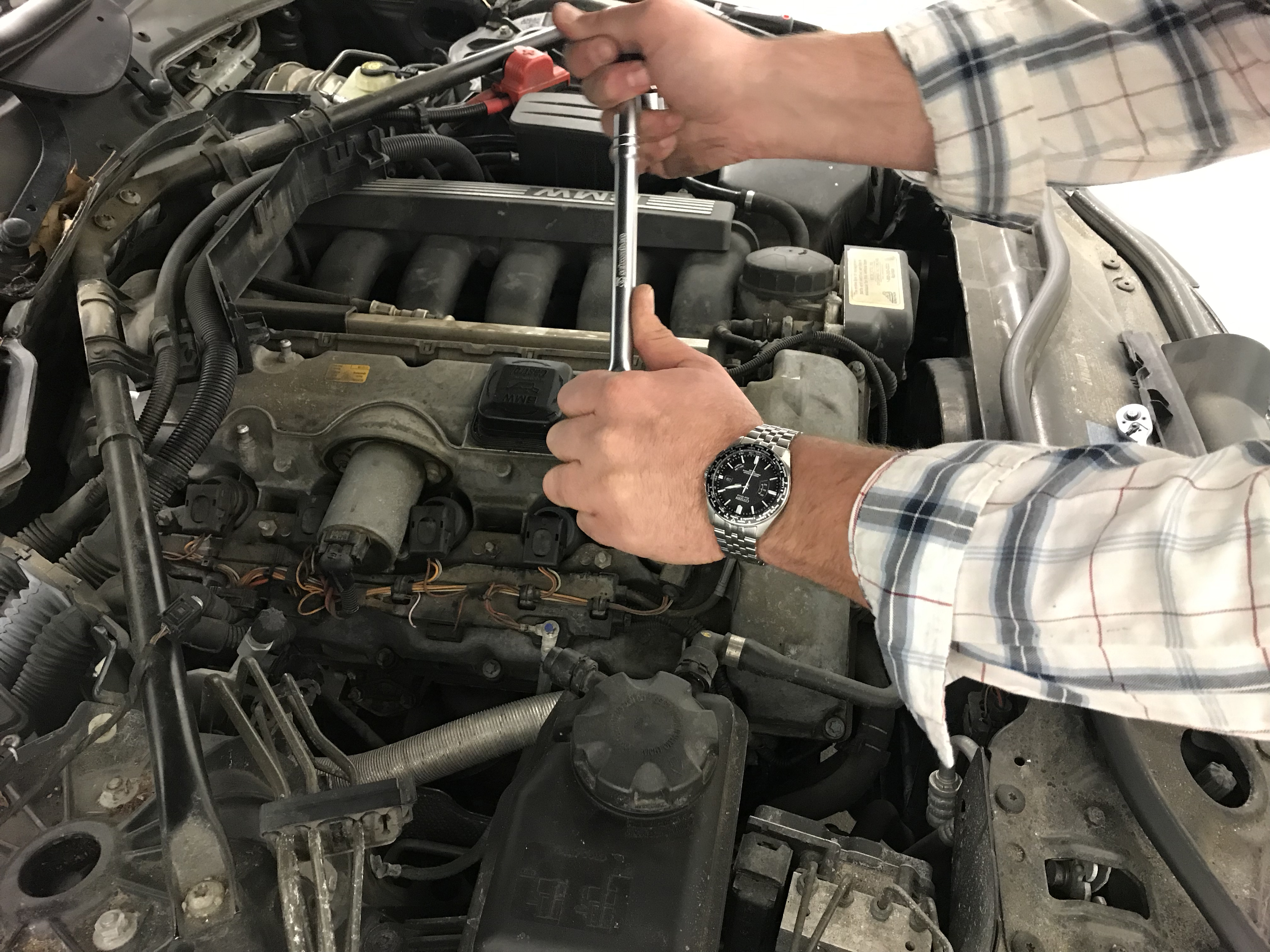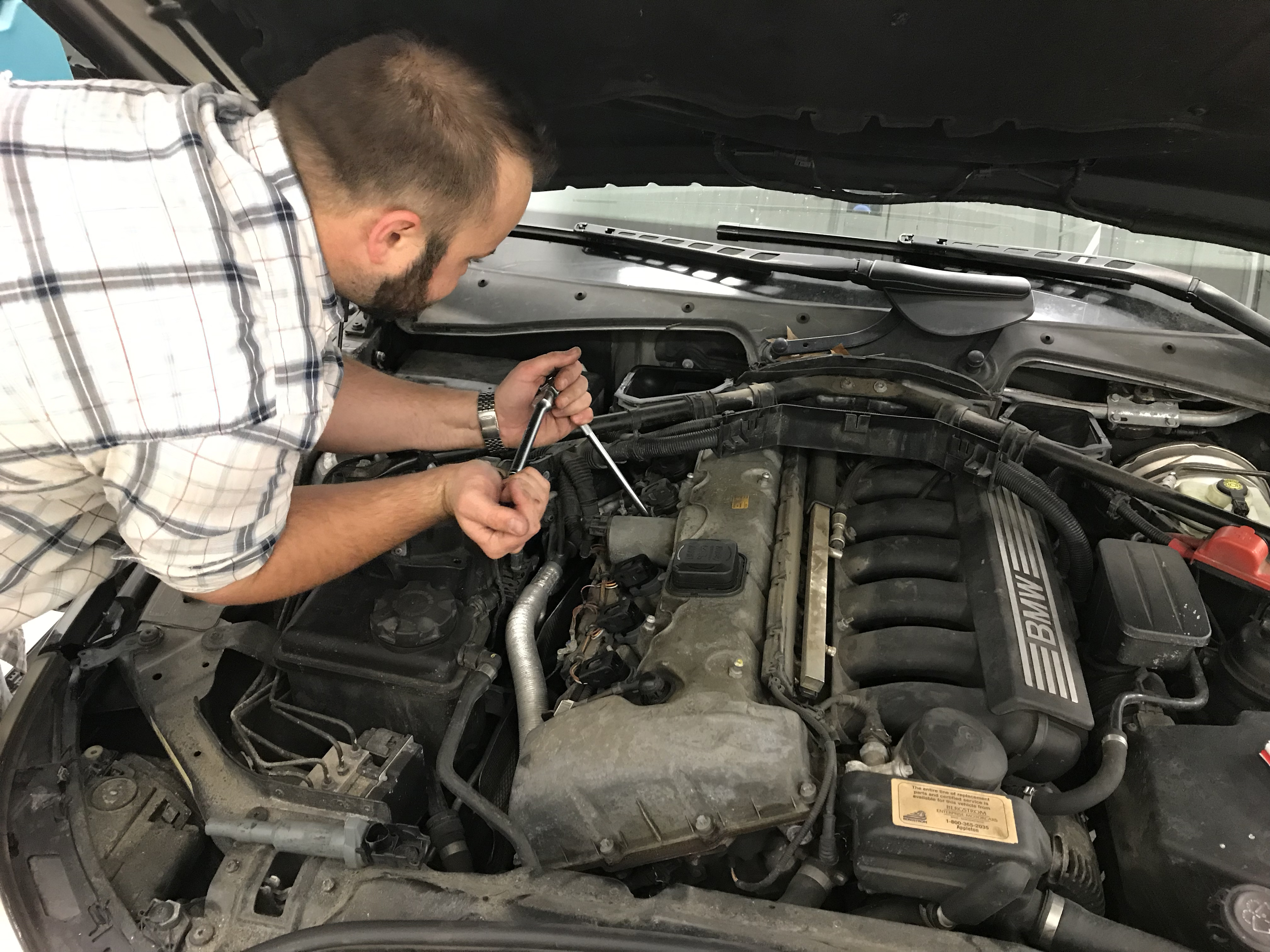Maintenance on your car is critical. Fresh oil, plugs, coils, brakes, and the essentials of the ‘basic tune-up’ are second nature to car guys. No one needs to tell us what our intervals are, generally speaking, and we keep track of mileage on most major wearable parts either in our head or on paper to ensure our cars stay in peak condition mechanically. On a car you’ve owned for years, you will have likely completed several minor and major services and have become familiar with how your car behaves at its best and at its worn out, which makes these services easy to remember. However, buying a new car, preparing your car for winter, or stepping in to service a car you haven’t worked on can make these services more time-consuming or more difficult to remember. This adds complications, but shouldn’t discourage you.

Today, I helped our resident Social Media guru, Riggs, replace his coil packs and spark plugs with new Bosch parts on his BMW E61 530xi and managed to find a few good talking points in the process despite the relative simplicity of the job. This won’t be a DIY, but it is a good opportunity to demonstrate best practices by using this car as a ‘worst case’ example and remind you that the best equipment in your shop is generally the gray matter between your ears.
Changing spark plugs and coil packs is not an involved process unless, like me, you own a Subaru WRX. On BMWs, the straight six or straight-four engines in particular very little stands in the way of you and the ignition components that require service. There is our first little snag: remember, nothing ever works out the way you think it will, even in jobs you’ve done a thousand times, that is not difficult in appearance. Always be prepared for something to happen. Hope nothing does happen but just be prepared to spend more time on your simple service than you think in case something breaks, you get stuck, or end up with the wrong parts.

Taking the cowling, engine cover, rain seals, and plug wires off went smoothly. With 0deg temperatures outside, we made the right choice to let the car sit in our shop all day warming back up from its commute. This allowed us to remove the potentially brittle trim and beauty pieces without any risk of damage. Then, our first actual roadblock presented itself.

With the coil pack removed from cylinder one, I began to back the spark plug from its well. It felt tight, crunchy, and like it was not loosening properly. Not good. An aluminum head is susceptible to cross threading, especially with the spark plugs, if someone improperly installs them without taking the time to line up the threads and carefully tighten them to spec. In this case, the previous owner or a previous mechanic clearly found a rough spot and kept on ramming the plug into the well. I should clarify that Riggs had not yet gotten to some of the basic maintenance on his daily beater in his brief ownership. An intermittent misfire prompted us to replace the ignition system, which brings us to the present, where we both stood in front of his car evaluating our options.
Cross threaded bolts in a head or block are nothing new to me; I have been working on old BMWs for years and encountered my fair share of shoddy work by previous owners that resulted in me needing to ‘persuade’ the nut or bolt in question to vacate the home to which it was cemented with rust and corrosion. Several times I have needed to retap or chase threads afterward, which is why I always have a thread repair kit in my travel tools and a full tap and die set in my home garage. The ability to fix yours or someone else’s mistakes is critical when maintaining your own car.

For better or worse, we decided to warm up the engine a bit and soften up the aluminum to force the spark plug out. We prayed there was enough thread left to actually pull it out and not smooth-bore the well, utterly stonewalling our progress. With the engine warm, we tried once again to carefully back out the spark plug. Turn after agonizing turn of the wrench later, the spark plug and a thimble’s worth of aluminum shavings managed to back out of the head. Never have I encountered a spark plug more improperly installed. I have no qualms calling out whoever may have installed it previously as someone who should not be allowed to touch tools unsupervised. The damage was cringe-worthy to the head. Fortunately, as we always have a thread repair kit to rescue us from our mistakes, I was able to rectify the situation. I pulled the proper tap, 3/8 drive attachment, my 3/8 wrench, and covered the threads of the tap with a generous coating of PB80. Since we were going to be tapping into the spark plug well, it was important that we pull out as much of the metal shavings as possible to prevent them from entering the oil channels and combustion chamber, where they could potentially cause damage.

In a perfect world, drawing a vacuum on the plug well after chasing the threads is ideal. Unfortunately, all we had was shop air. So, with careful confidence, I tapped out the plug well to the bottom of the threads, pulled out a good deal of aluminum stuck to the grease on the tap, and then hit the well with compressed air for a solid beat in hopes that the remainder of larger metal shavings would exit the chamber.
With the repair made, a fresh Bosch plug smoothly installed, and coil pack on, we had to decide whether to keep going and risk needing the same procedure for each plug or leave it and weigh the worth of the car as it sits. After some coaxing, I convinced Riggs to soldier on and finish the job we started. As luck would have it, the following five plugs and coils were replaced without incident, though some did require a chase with the tap to clean gunk and buildup that made the threads sticky and difficult. With clean threads, fresh plugs, and new coils installed, we put the beauty covers and cowling back in place. We stood back, disproportionately proud of our relatively minor accomplishment and perseverance in the face of adversity.

While this was as minor of a service as one will find on a car, besides oil and bulbs, it proves my point that nothing is a five-minute job on a used car when you don’t know the mechanical history or have a great deal of time spent under the hood of that individual car. Fortunately, from my experience with BMWs and years of needing to be my own safety net, these kinds of snags are not ones that deter me from powering through a project. With the right tools, determination, and confidence in your own abilities, even when things don’t work the way they should, you can find a solution. Remember to service your cars regularly, don’t be afraid to ask for help, or stop to get the right tools, and you’ll be fine. Whether you are just replacing spark plugs or taking on a full engine swap, these simple bits of advice can make your job easy and enjoyable.
Schwaben Thread Repair Kit
BMW Ignition Service Kit






